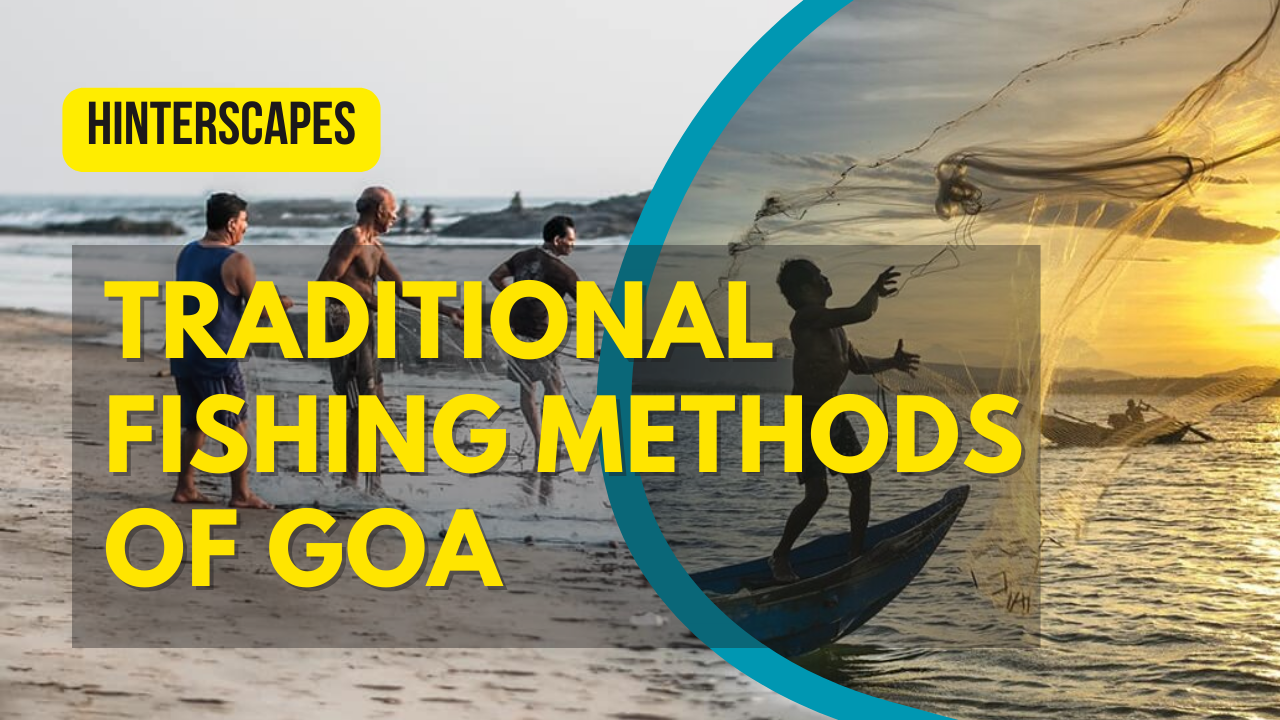Goans have long relied on fishing as a central occupation due to their location on the coast. Fishing communities in Goa are distinguished by their surnames, including Kharvi, Nustekar, Arrikar, Kantaikar, Magkar, Pagelkar, and Ramponkar. Although modern trawlers and machinery have largely replaced traditional fishing methods, many Goans still depend on local fishing communities for their daily catch. These communities practice sustainable and nature-friendly methods, driven not by profit but by respect for nature's cycles. To allow fish stocks to replenish, fishing is prohibited during the monsoon season in Goa. Goan cuisine is also known for its strict guidelines regarding the appropriate fish to consume during specific seasons.
Goa has a long history of traditional fishing practices that have been passed down through generations of fishermen. Fishing has been a way of life for many communities in the state of Goa. The traditional methods of fishing in Goa are diverse and unique, and some of them are still practiced by local fishermen today.
Here are some of the traditional methods of fishing in Goa.
- Ramponn
- Kanni or Zaali
- Gorovop or Poler
- Manas or Poin
- Kaathalli
- Khutani or Khutavanni
- Jhaari
- Dipkavnni
- Trawling
Ramponn - Most Common Fishing Method in Goa
One of the most common traditional fishing methods in Goa is the use of nets. Fishermen use different types of nets depending on the type of fish they are targeting and the depth of the water. For example, some fishermen use drift nets, which are left to float in the water and capture fish that swim into them, while others use gill nets, which are set up vertically in the water and capture fish that swim through them.
Ramponn is a traditional fishing method that uses a large seine net that is pulled by a group of fishermen from the shore into the sea. The net is then closed and pulled back to the shore, capturing fish and other marine life in the process.
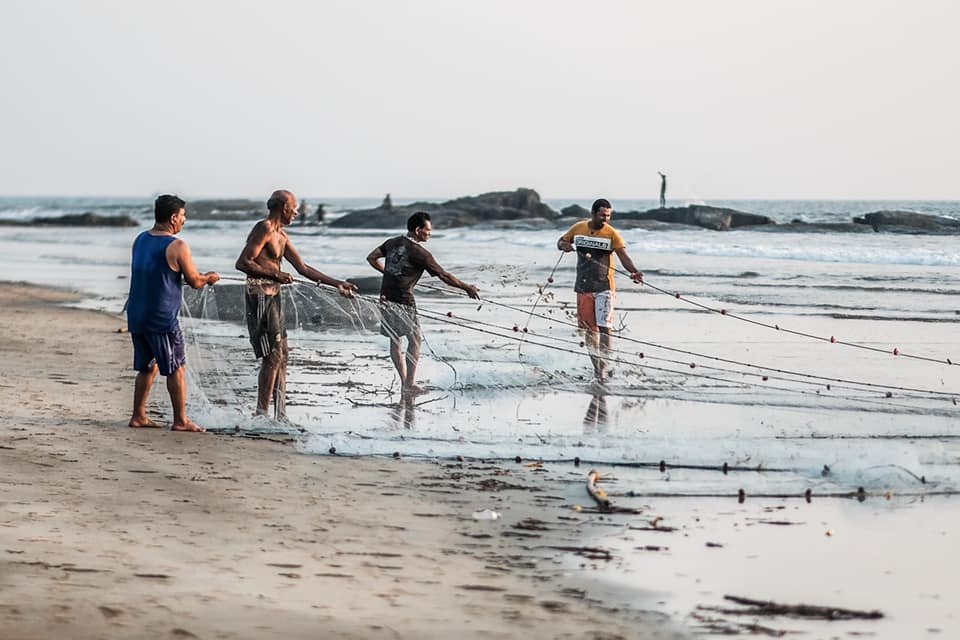
To employ the Ramponn fishing method, fishermen navigate a canoe through the waters in a circular motion while dragging a net behind them. This technique is particularly effective in catching larger fish varieties such as snapper, grouper, barramundi, shark, barracuda, and lobster during the monsoon season.
Kanni or Zaali - Barrier Net Fishing in Goa
Kanni, also known as zaali, is a form of barrier net fishing that requires two or more people, depending on the catch. Two fishermen hold a rectangular net with bamboo sticks on either side as they move through shallow waters. For deeper bodies of water like ponds, more men may be needed to pull a larger net. Similar to khutani, this method is used during the monsoon season to catch fish such as tambuso, dodiyare, muddoshi, and tambdem bhalem (red eel). When a semi-circular net is used with a bamboo frame, the same method is referred to as zaali, which is used for catching shrimp in muddy sections of shallow waters.
Khantolo/Rod Fishing Technique in Goa
This method involves using a long bamboo pole with a baited line attached to it. The pole is held by the fisherman, who patiently waits for the fish to bite.
In addition to these methods, some traditional Goan fishermen also use lines and hooks to catch fish. This method involves attaching a baited hook to a line and casting it into the water. The fish are attracted to the bait and are caught when they bite the hook.
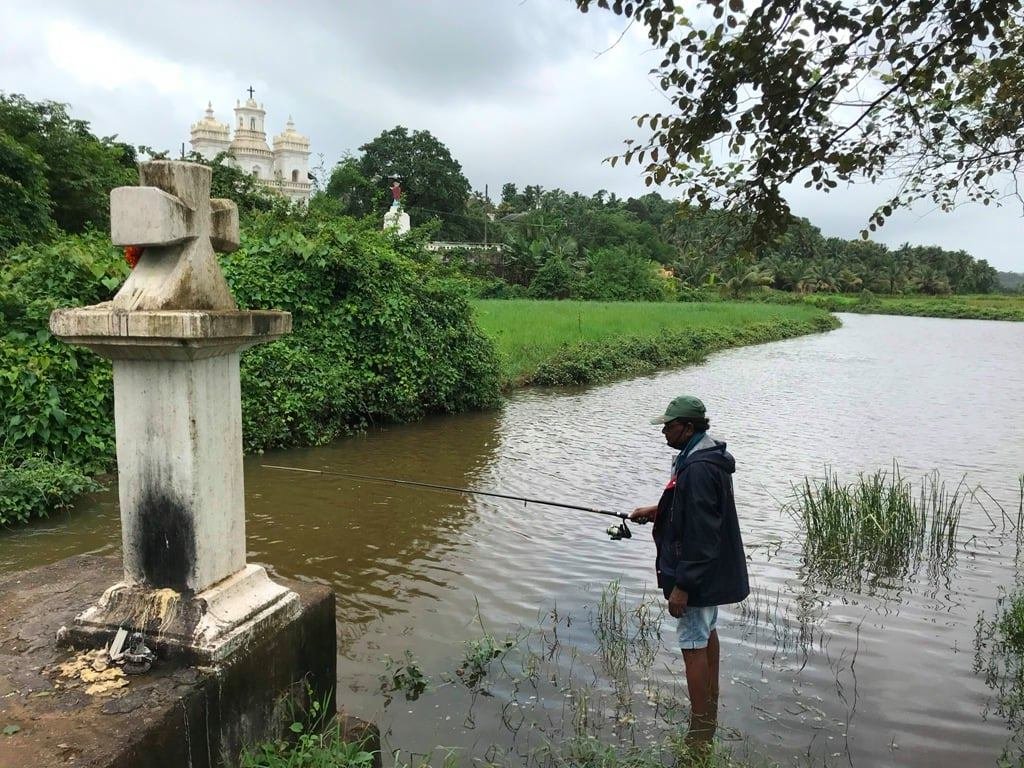
In Goa, there are two popular angling methods:
Gorovop (rod-fishing) and Poler (line-fishing). In Gorovop, a wooden or bamboo stick is used to tie a nylon string with a hook. The bait and hook used vary depending on the type of fish one intends to catch, with smaller fish and rice dough being common baits. Poler, on the other hand, is used to catch larger fish and involves using a nylon string without a rod and more enticing bait, such as a big prawn or crab, which is flung into the water. While modern fishing rods and specialty fishing lines have replaced bamboo rods and nylon strings, these simpler fishing techniques are still popular for recreational purposes throughout Goa.
Manas or Poin - Sluice Gates Fishing in Goa
To catch fish in Goa's rivers, fishermen use a traditional method called Manas or Poin. This technique involves the use of sluice gates, which are used to regulate the flow of water during the ebb and flow of tides. The gates are also used to trap fish at low tide when they are closed. This is a sustainable and efficient way of catching fish without causing harm to the environment.

Kaathalli - Cast Net Fishing in Goa
To catch fish like khorsani, shevtali, conge, and tigur during the monsoon, Goan fishermen use a method called cast net fishing or kaathalli. This involves laying out a net that is typically 200-300 meters long with small floats running across one side to help it spread over the water like a screen. This method is also used with a smaller net, called paguer, which is cast by a single person. These fishing techniques are a staple of Goan culture and cuisine, and the types of fish caught using these methods are highly regarded for their quality and taste.
This method involves using a large fishing net that is thrown into the water by a group of fishermen from a boat. The net is then pulled back to the boat, capturing fish and other marine life in the process.
Some traditional fishing practices in Goa are seasonal, and fishermen may only use certain methods during specific times of the year. For example, during the monsoon season, when the sea is rough and the waves are high, some fishermen use traditional catamarans or wooden boats to fish in the shallow waters close to shore.
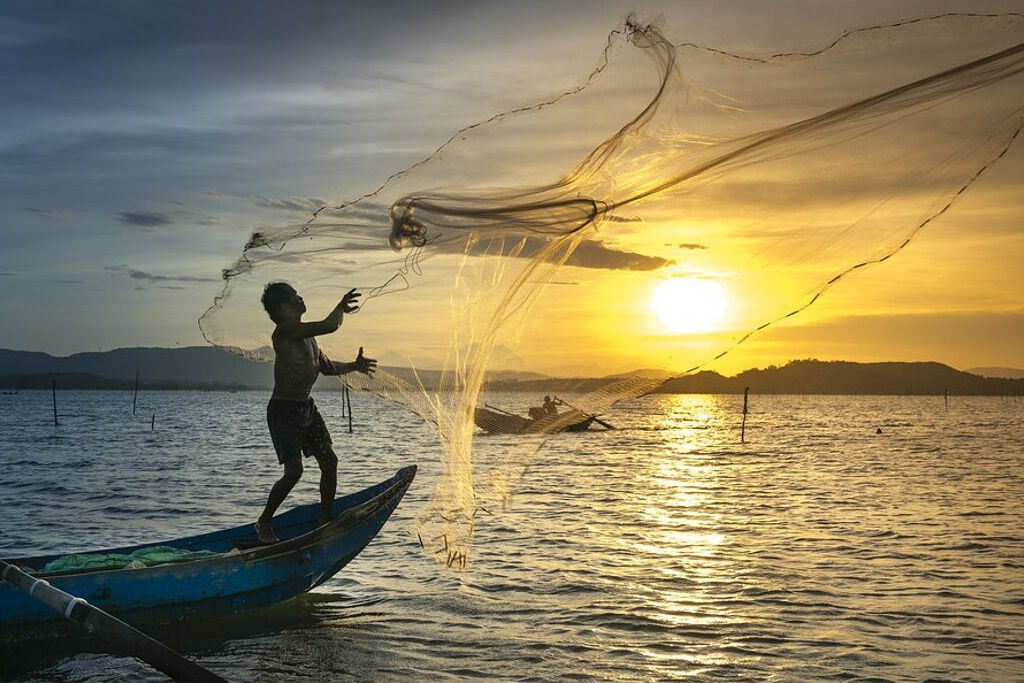
Khutani or Khutavanni Fishing in Goa
The indigenous technique of stake fishing, called khutani or khutavanni, involves the use of wooden poles staked into the river with a net attached across them to ensnare fish. The catch is collected during low tide. This method is particularly popular during the monsoon season for catching tambuso (red snapper), chonak (sea bass), and dodiyare (croaker).

Fishing using Jhaari/Fishing Traps/Fishing Baskets in Goa
This is a traditional method of fishing using a traditional hand-woven basket called a moriom or fishing traps. These are woven baskets made from natural materials such as bamboo or palm leaves. The basket is placed on the sea bed or shallow waters where fish are likely to swim. Bait like meat or small fish or some food is put inside it to attract the fish. The fish swim into the basket and gets trapped inside.
To catch crabs for the delicious crab curry, Goan fishermen use a tool called jhaari. Jhaari consists of a circular metal frame called kobulem, on which a net is laid. These nets are placed in clusters on the river with a distance of 50 meters between them, allowing them to be placed uniformly in the water. A string is attached to the sets of jhaari, and when the fishermen detect movement in the string, they take action to remove the nets.
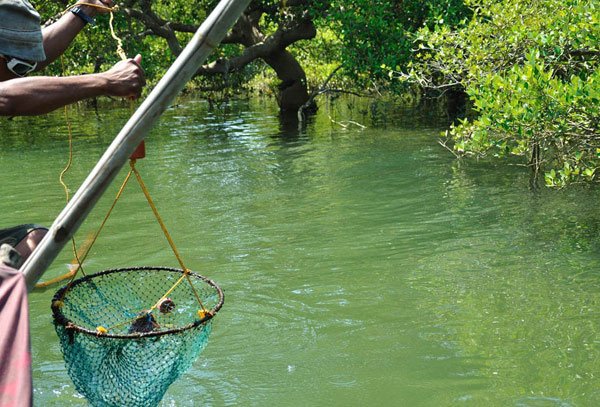
For clams, free divers use their hands to catch them, and oysters are collected by digging along seashores and riverbanks.
Dipkavnni - Fishing using Lights in Goa
Dipkavnni is a method of using light sources to confuse fish. Back in the day, paraffin or kerosene lamps were used to shock fish and then catch them with a handheld net. Today, people use high-beam torches in shallow water to do the same.
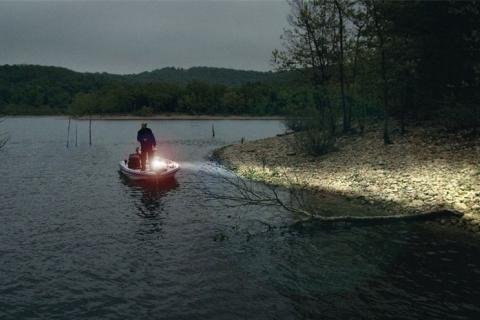
Trawling - Modern way of Fishing in Goa
Trawling is a modern method of fishing that involves using a large net that is dragged along the sea bed by a boat. This method is commonly used in Goa by commercial fishermen.
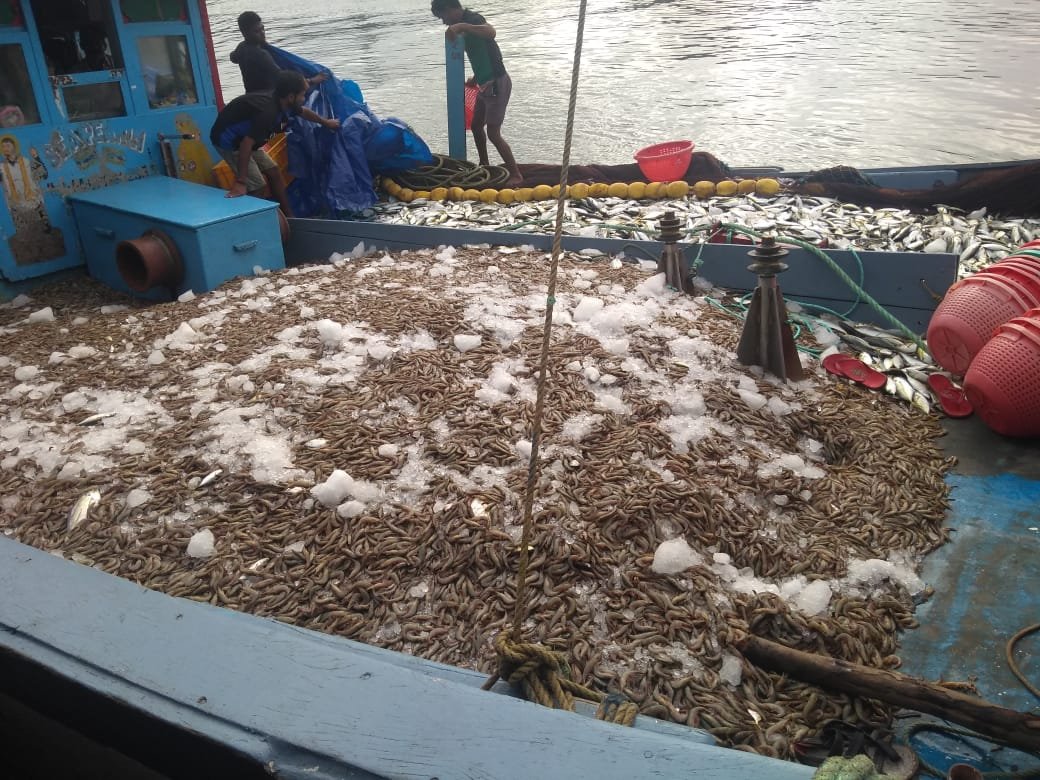
Overall, traditional fishing practices in Goa are an important part of the state's cultural heritage. It's worth noting that some traditional fishing practices in Goa are being phased out due to the advent of modern fishing techniques, but efforts are being made to preserve these methods and promote sustainable fishing practices.

Instead of the usual greetings, one might hear Nuste kithe gho? if they are a woman or Nuste kithe re? if they are a man being called out by Goans. This question refers to what fish is on the menu for the day as fishing is a central part of Goan culture and cuisine. For most Goans, rice, fish curry, and fried fish make up their staple lunch. While some Hindus go vegetarian a few days a week, every community, regardless of caste or religion, consumes fish. In fact, the Saraswat Hindus of Goa even have a unique classification system for fish, dividing them into vegetarian and non-vegetarian categories.
Suggested Read: Goan Cuisine, Food of Goa, Goan Delicacies
Fishing in Goa is a diverse practice, with various methods employed by different fishermen. Many Goans have learned to catch fish with their bare hands during the monsoon season, when fish congregate in shallow waters. This technique, known as porxevopp, involves having a friend muddy the water to immobilize the fish, allowing the fisherman to skillfully use their hands to catch them. Despite the risk of stings or scratches, young boys still learn this method to obtain a tasty catch. In the river systems of Goa, more experienced fishermen use this method by building retaining walls between paddy fields and the river to prevent saline water from entering. They then muddy the water near the walls to catch fish with their hands or by dropping a net onto a muddied riverbed.
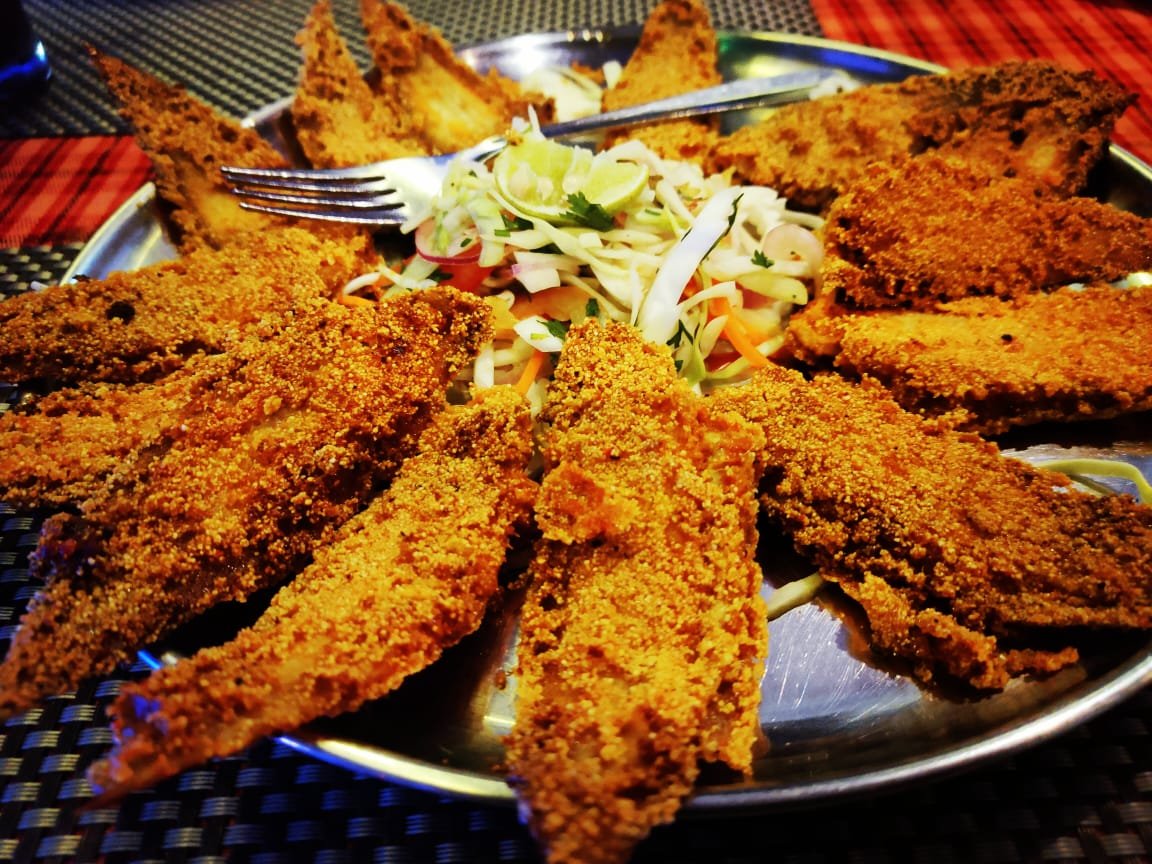
To savor the seasonal variety of fresh seafood, Goans follow a community tradition of preferring certain fish during specific times of the year. For instance, during winter, fish like kingfish, pomfret, doumer, tuna, mackerel, crab, prawns, tiger prawns, shark, lobster, squid and mussels are considered the best. Whereas in summer, Goans relish shark, kingfish, squid, crab, bombil (bombay duck) and prawns. If you have the chance to spend a longer period in this coastal state, fishing in Goa could be a delightful way to not only acquaint yourself with the locals but also experience the joy of traditional, uncomplicated ways of catching fresh seafood.
To experience this unique fishing culture in Goa, we offer you an amazing trails where you can actually catch the fish(depending on your luck) on your own. Book your day now!
We have such amazing things about Goa which are beyond beaches and nightlife. Stay updated with our blog to read more and get to know about real Goa. Also don’t forget to follow us on Instagram to watch few amazing videos of unseen Goa.

